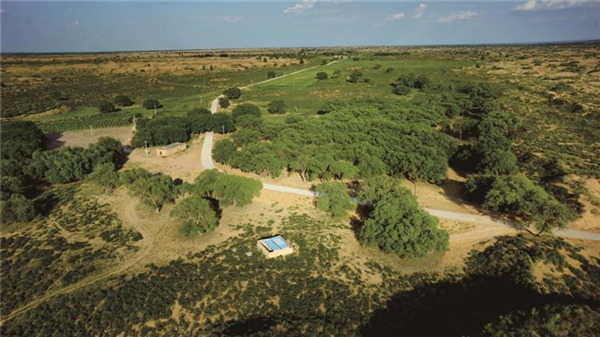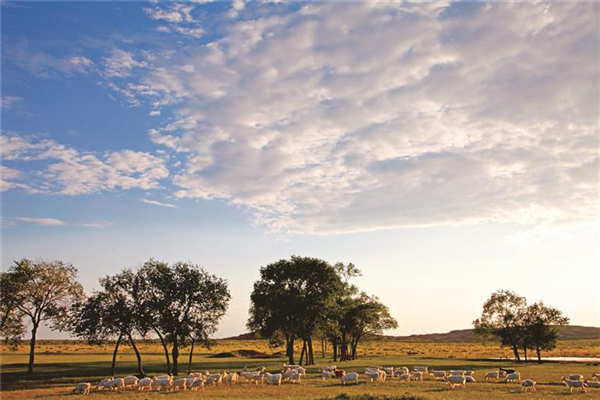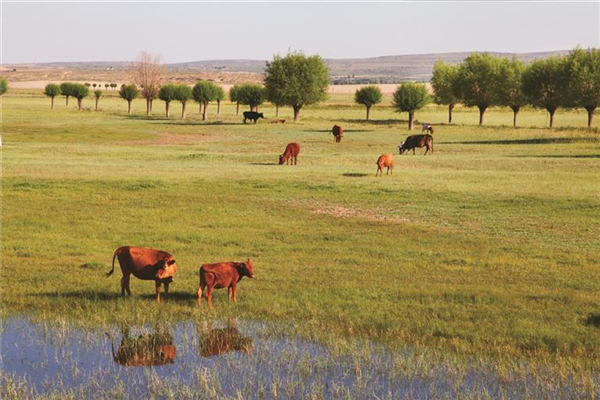Anti-desertification work in Maowusu Desert delivers results
Updated: 2020-10-23  Print
Print 




The once-barren Maowusu Desert turns green due to tree planting efforts. [Photo/Inner Mongolia Daily]
Around 70 percent of the Maowusu Desert in North China’s Inner Mongolia autonomous region has been brought under control thanks to organized grass and tree planting over a 60-year period.
The Maowusu Desert, known as one of the four largest sand-covered areas in China, covers more than 42,200 square kilometers between southern Inner Mongolia autonomous region and northern Shaanxi province.
Uxin Banner in Inner Mongolia’s Ordos city is an excellent example of anti-desertification work in the Maowusu Desert. At one time, more than 90 percent of the area in Uxin Banner was sand-covered land. A whopping 40 percent of the total land area was classified as intensely barren land, and the forest coverage rate was only 2.6 percent.
Nearly one-third of the Maowusu Desert is in Uxin Banner.

Sheep graze in grassland that was once a sand-covered expanse of the Moawusu Desert. [Photo/Inner Mongolia Daily]
Over 60 years, Uxin Banner has committed to ecological construction and preservation as its largest infrastructure and livelihood project. As a result, a desertification prevention and control plan featuring policy guidance, industry participation and societal considerations was created.
Now, the forested area of Uxin Banner covers 5.76 million mu (384,000), and the percentage of forest and vegetation coverage has reached 32.89 percent and 80 percent, respectively.
Uxin Banner has been granted the honorable titles of National Forestry Science and Technology Demonstration County, the first Chinese Residential Environment Demonstration Town, the National Ecological Civilization Benchmarking Flag, National Ecological Protection and Construction Demonstration Zone and National Garden County.

Cattle feed in grassland turning from sand lands in Moawusu Desert.[Photo/Inner Mongolia Daily]





 Ordos Impression
Ordos Impression Ordos WeChat
Ordos WeChat Ordos Reported
Ordos Reported
